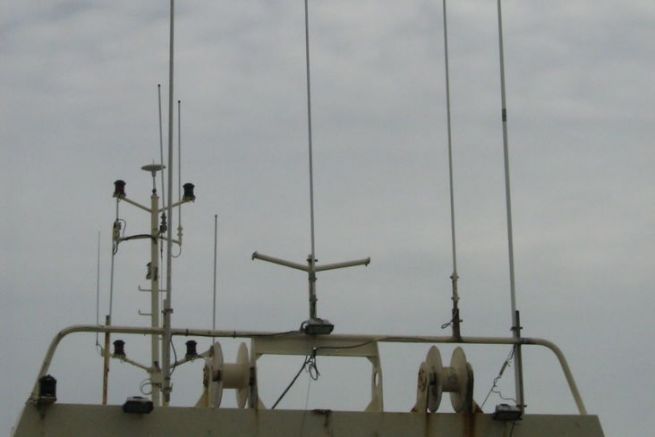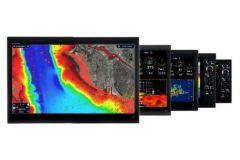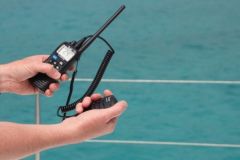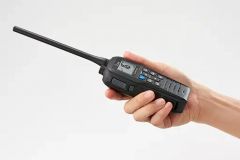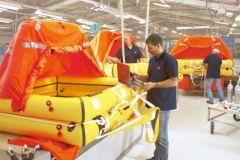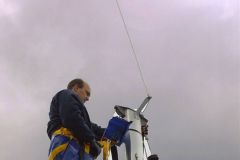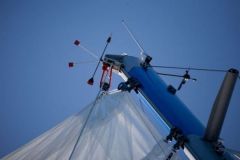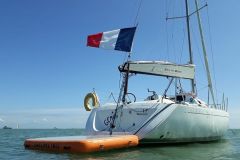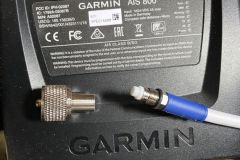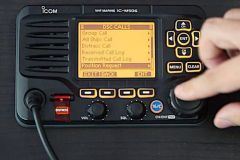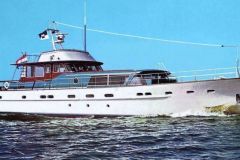Wireless communication devices are abundant on board our boats. So much so that they can sometimes interfere with each other. Knowing and understanding the frequencies of each piece of equipment allows us to understand the reasons that can sometimes disrupt their operation.
Less than 30 Mhz
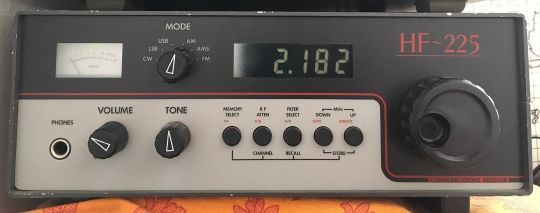
In the band below the 10-meter wavelength, we find long-range equipment, most often used in offshore navigation.
- Radio clocks 162 kHz for the France Inter transmitter, used to set the time of the radio controlled weather stations
- Radio Grandes Ondes . From 150 kHz to 300 kHz, it is the only way to listen to free information
- Navtex This navigation information reception system operates at 518 kHz ( long range ) and 4.4 MHz ( medium range )
- International distress frequency This frequency is permanently monitored by the MRCCs on 2182 kHz
- CB The Cibi (CB) band is still used, on 27 MHz
From 30 MHz to 300 Mhz
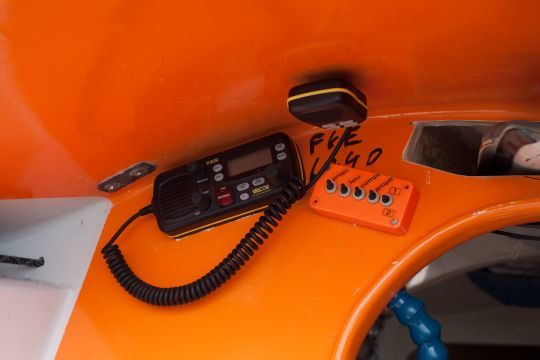
It is in this frequency band from 10 meters to 1 meter that the means of communication are located medium range "that we use.
- FM Radio . Our FM radios use the 88 MHz to 108 MHz band.
- Marine VHF . Our onboard VHF operates on a band from 153 MHz to 174 MHz. Channel 16 is located at 156.8 MHz
- RNT or DAB . The modern digital terrestrial radio service is present between 174 MHz and 223 Mhz
From 300 MHz to 3 Ghz

This so-called centimetric frequency band ( the wavelength is expressed in centimeters ) is part of the UHF and SHF ( ultra high frequency/super high frequency ). We start to find satellites for example. It provides a short range coverage except in direct vision.
- TNT . Digital terrestrial television uses frequencies between 470 MHz and 694 MHz.
- GPS . The satellites transmit the information essential to the operation of the positioning on a frequency band from 1164 MHz to 1300 MHz and then on the frequency band from 1517 MHz to 1660 MHz
- Land Mobile Telephony . Land mobile telephony uses several frequency bands in this part of the spectrum. Our modern telephone terminals are able to select the best portion of the band in question to operate.
- Mobile satellite telephony . The 4 satellite telephone operators (Iridium, Inmarsat, Thuraya and Globalstar) operate in a frequency band between 1517 MHz and 1660 MHz, identical to GPS. Inmarsat is present on two additional slots for data transport, 1 980 MHz and 2 170 MHz
- Bluetooth and wifi It is between 2400 MHz and 2438 MHz that Bluetooth devices communicate with each other. It is also in this part of the spectrum that our equipment uses wifi.
- Radar . The main frequency range of the radars is between 2735 MHz and 3400 MHz.
Above 3 GHz
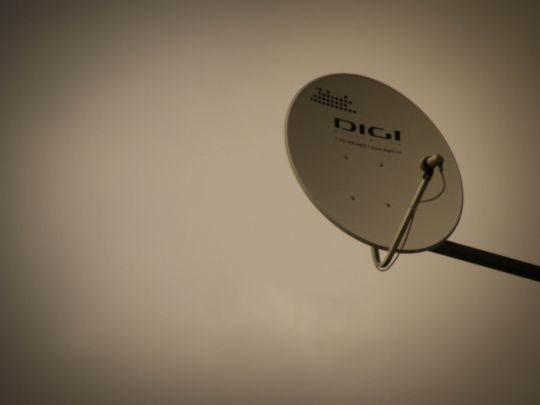
The millimeter frequency band offers satellite services almost exclusively, with the transmitter/receiver pair having to be " on sight " of each other.
- Land Mobile Telephony . At 3,500 MHz, 5,000 MHz, 25,000 MHz and 66,000 MHz is the new 5G
- Satellite TV . Regardless of the package chosen, television transmission satellites operate between 10,700 MHz and 13,250 MHz
- Short Range Radars . The short-range radars ( such as those we have on our boats most often ) operate in a frequency range between 15 630 MHz and 17 200 MHz
